
BROUGHT TO YOU BY INTERCULTURAL STUDENT ENGAGEMENT


BROUGHT TO YOU BY INTERCULTURAL STUDENT ENGAGEMENT

To help you celebrate Asian American and Pacific Islander Heritage Month (AAPI) in April, the Multicultural Resource Center in collaboration with the Asian American Alliance (A.A.A.) has created a toolkit that provides a host of resources to help you explore, plan, communicate, and engage your teams on this significant month.
This toolkit contains links to videos, photos, articles, and shared folder to be used at the University at Albany to explore the heritage, culture, and experience of Asian heritage people both historically and in American life today, while also sharing the various ways our Asian American Alliance collaborates with the Office of Intercul

1. Getting Started
a What is AAPI?
b Heritage Month Theme
2. Getting Involved
a. Asian American Alliance
b Asian movies and documentaries
3. Taking Action
a. Resources and further information
b. Lunar New Year, Diwali & Holi
c. Stop Asian Hate
d Shared Resource Folder, click here


Associate Director of Intercultural Student Engagement - Image of a cherry blossom bloom

Figure 1. The logo that will be used to unify our efforts in educating our UAlbany community about the historic and ongoing oppression that is faced by the Asian community
AAPI stands for Asian American and Pacific Islander. The term is used to describe a diverse and fastgrowing population of 23 million Americans that includes roughly 50 ethnic groups with roots in more than 40 countries. May is Asian American Pacific Islander Heritage Month (or AAPIHM for short), first created by Congress in 1992. AAPIHM falls in May because of several historical milestones, including the 1843 arrival of the first Japanese immigrants, and Chinese laborers’ enormous contributions to building the transcontinental railroad, which was finished in May 1869.
This year's theme: A Legacy of Leadership and Resilience. To learn more, click here.
May is Asian/Pacific American Heritage Month – a celebration of Asians and Pacific Islanders in the United States. A rather broad term, Asian/Pacific encompasses all of the Asian continent and the Pacific islands of Melanesia (New Guinea, New Caledonia, Vanuatu, Fiji and the Solomon Islands), Micronesia (Marianas, Guam, Wake Island, Palau, Marshall Islands, Kiribati, Nauru and the Federated States of Micronesia) and Polynesia (New Zealand, Hawaiian Islands, Rotuma, Midway Islands, Samoa, American Samoa, Tonga, Tuvalu, Cook Islands, French Polynesia and Easter Island). The month of May was chosen to commemorate the immigration of the first Japanese to the United States on May 7, 1843, and to mark the anniversary of the completion of the transcontinental railroad on May 10, 1869. The majority of the workers who laid the tracks were Chinese immigrants

The Asian American Alliance (AAA) was founded at the University at Albany in 1992 for the betterment of Asian American students. It is a social/cultural/political organization representing pan-Asian Americans on campus and in the community. Our primary purpose is to educate Asian Americans to empower themselves to take action and achieve. AAA started with two events: Asian Occasion (AO), a culture and fashion show in the fall semester, and the Asian Pacific Awareness Conference (APAC) held in the spring semester.
Today, we have grown to hold various workshops and recreational events in addition to our two main ones throughout the academic year that further help inform Asian Americans. AAA's mission is also to encourage Asian unity and to allow Asian Americans to further their interests. We have never lost sight of educating Asian Americans to be proud of their heritage while acquiring essential skills to succeed in America. Every other week, we hold meetings open to the student body and community to discuss issues in the Asian Pacific Islander American community. Through a commitment to education, advocacy, community outreach, and active political participation, AAA promotes diversity throughout the community at large. In pursuing these goals, AAA strives towards establishing equality in a multicultural society. We are not Asian-exclusive. We welcome everyone to our meetings, as well as our events and workshops! To learn more about the AAPI heritage groups on UAlbany’s campus click here.
Take an East Asian Studies Course at UAlbany!
• AAPI Faculty & Research
3 ways to honor AAPI Heritage Month
1. Explore the geography of Asia, Hawaii, and the Pacific Islands
2. Read a children’s book featuring Asian characters, written by Asian authors, or illustrated by Asian artists
3. Check out AAPI art museums and exhibits
4. Support Asian Owned Businesses
Join us to celebrate from across Asia all year with perormances, activities, storytelling:
JANUARY: Japanese New Year and Lunar New Year
MARCH: Nowruz and Holi
APRIL: Thai New Year and Cambodian New Year
MAY: Asian American Pacific Islander Heritage Month
SEPTEMBER: Chuseok and Mid-Autumn Festival
OCTOBER: Filipino American History Month
NOVEMBER: Diwali – Hindu New Year
DECEMBER: Bodhi Day
Authors to Know
TV Shows



ASIAN FILMS
Everything, Everywhere All at Once
2022 2h 19m A middle-aged Chinese immigrant is swept up into an insane adventure in which she alone can save existence by exploring other universes and connecting with the lives she could have led.
Tigertail
2020 1h 31m In this multigenerational drama, a Taiwanese factory worker leaves his homeland to seek opportunity in America, where he struggles to find connection while balancing family and new-found responsibilities
ASIAN DOCUMENTARIES
“Documentaries can open windows to our past They allow us to re-live iconic moments in history Below is a list of powerful documentaries exploring Asian history and culture in America ” PBS org
The Donut King
2021 1h 30m
Meet the Donut King, Ted Ngoy, the Cambodian refugee who built a multi-million-dollar empire baking America’s favorite pastry.
Linsanity
2013 1h 29m
The life story of basketball sensation, Jeremy Lin.
Call Her Ganda
2018 1h 33m
When Jennifer Laude, a Filipina trans woman, is brutally murdered by a U.S. Marine, three women intimately invested in the case--an activist attorney, a transgender journalist and Jennifer's mother) -galvanize a political uprising, pursuing justice and taking on hardened histories of US imperialism.
Love & Bananas: An Elephant Story
2018 1h 17m
A team of elephant rescuers embark on a mission to rescue a 70-year-old captive Asian elephant

The Lunar New Year is one of the most important social and economic holiday for billions of people around the world. The holiday is tied to the the lunar-solar Chinese calendar and was originally observed as a time to honor household and heavenly deities and ancestors.
Explore Lunar New Year traditions and celebrations around the world by clicking here. The Chinese Student Association will be hosting a Lunar Prom for early Spring semester
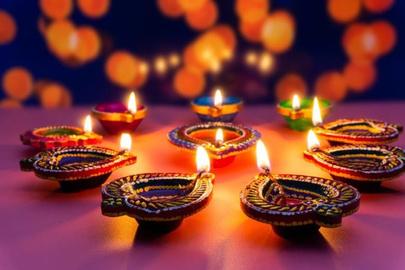
Holi is considered as one of the most revered and celebrated festivals of India and it is celebrated in almost every part of the country. It is also sometimes called as the “festival of love” as on this day people get to unite forgetting all resentments and all types of bad feeling towards each other. To learn more, click here.
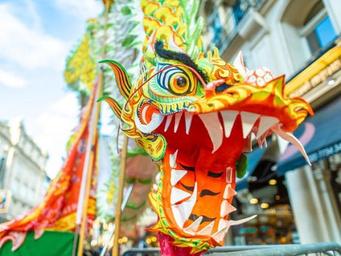
Diwali is the Festival of Lights, a 5-day celebration to honor the triumph of good over evil and new beginnings. The date of Diwali changes annually – it’s always celebrated on a moonless night in October or November.
Each year, the Albany State Indian Alliance and Indian Student Organization host annual Diwali celebrations.
To learn more, click here

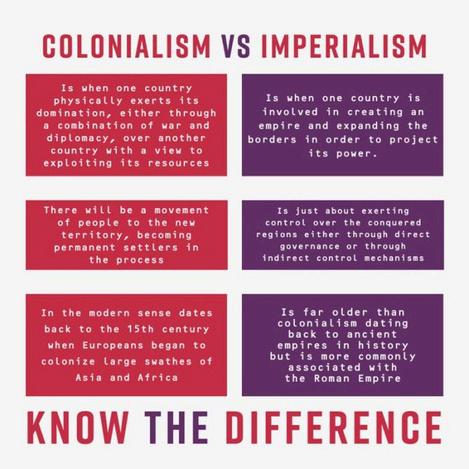
Colonization occurs when one country takes over the lands and people of another country or territory and subjects them to rule by its government instead of their own. When one country colonizes another country or territory, it usually exploits the land, resources, and people of the colonized lands for economic gain Nearly every country on Earth has been either a colonized territory or a colonizing power at some point in its history (in fact, some countries have been both).
The term "colonization" means different things to different people. Because of this disparity, the list of countries that have never been colonized varies tremendously from one source to the next.
The age of colonialism began about 1500, following the European discoveries of a sea route around Africa’s southern coast (1488) and of America (1492).
To learn more about the historical background, motives, and colonial history, click here.
Additional resources:
• Countries Never Colonized 2023
• Colonialism in Southeast Asia: Resistance, Negotiation, and Legacies
• Across generations, South and Southeast Asians reflect on colonialism’s impact on identity
• A Brief Look at Imperialism in Southeast Asia
• Difference between Colonialism and Imperialism
There are some 260 million indigenous peoples in Asia, three-quarters of the world's total, making it the most culturally diverse region in the world. To learn more, click here.

Arundhati Roy is a renowned Indian author and activist, best known for becoming the first Indian woman to win the Booker Prize with her debut novel The God of Small Things in 1997. Beyond her literary achievements, Roy is a passionate advocate for environmental and human rights. One of her most prominent political stands was against the Narmada Dam project in India a massive development initiative that threatened to displace millions of people and cause significant environmental damage Roy emerged as a leading critic of the project, using her platform to draw global attention to its consequences Her powerful critique is captured in her influential work The Greater Common Good, where she explores the human and ecological costs of the dam
Learn more
More of Roy’s works
‘No Propaganda on Earth Can Hide the Wound That Is

Palestine: Arundhati Roy’s
PEN Pinter Prize Acceptance
Speech
Empowering the Marginalized: Arundhati Roy's Portrayal and Advocacy for India's Deprived Classes
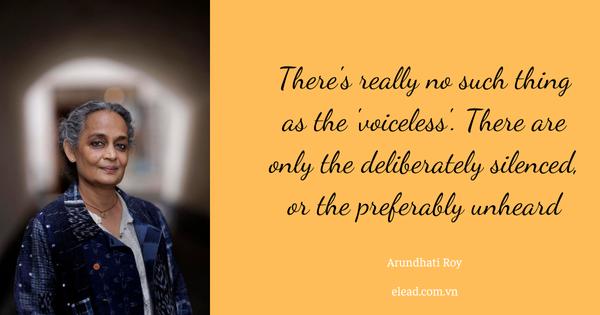

Among the more traditional elements of Asian American culture, religion, spirituality, and faith have always been important to Asian American communities, as they were for many generations before them But within the diversity of the Asian American community, so too comes diversity in their religious beliefs and practices. The second-largest religious group among Asian Americans are "Eastern Religions" that include Buddhist, Hindu, Taoist, Baha'i, Shintoism, Zoroastrian, and Sikh.

At the university, we have an active Buddhist Student Association partnered with a faculty advisor that provides the opportunity to practice, meditate, and learn about East Asian culture. To learn about the difference between Eastern and Western religion, click here. Visit our Interfaith Center to learn more.
Asian Pride Project is a nonprofit organization that celebrates the journeys, triumphs, and struggles of LGBTQ individuals and Asian and Pacific Islander (API) families and communities through the use of arts film, video, photography and the written word as a medium for social justice and advocacy.
To see the project, click here.
This journey of learning and exploration was crowdsourced by members of the Stanford Graduate School of Business community and members of the larger Stanford community They have designed a calendar to be self-paced, and to take ~15 minutes each day to acknowledge and engage with the contributions and challenges of the AAPI community We think you will agree that the totality of these thirty-one activities is awe inspiring and humbling, and only the beginning of our learning. Join us for this journey of learning and cultural humility.
To see the project, click here.

Most people think of Asians as recent immigrants to the Americas, but the first Asians –Filipino sailors settled in the bayous of Louisiana a decade before the Revolutionary War. Asians have been an integral part of American history since that time.

In the context of sports, 1947 is perhaps best known for being the year in which the legendary Jackie Robinson broke the color barrier in baseball. Lesser known is the fact that over in the NBA then known as the Basketball Association of America (BAA) a Japanese American by the nameofWataruMisakadidthesamething.Tolearnmore,clickhere. AnnaMayWongwasbornin 1905inLosAngelesasWongLiuTsong.Shewascastinherfirstroleasanextrainthefilm"TheRed Lantern"in1919atage14andherfirstleadingolein1922inthe"TheTolloftheSea."Shewentonto appearinmorethan60filmsincludingoneofthefirstmoviesmadeinTechnicolor.Shebecamethe firstAsianAmericanleadactorinaU.S.televisionshowforherrolein"TheGalleryofMadameLiuTsong"in1951. Hollywood’sAnnaMayWongbecamethefirstAsianAmericanonU.S.currency.It wentintocirculationonOctober24,2022.Tolearnmore,clickhere.
In 2021, Sesame Street introduces the first Asian American Muppet. A 7-year hold Korean American character led by Kathleen Kim. To learn more, click here.
Susan Ahn Cuddy, a Korean American woman broke glass ceilings of her time when she became the first Asian American female officer to serve in the U.S. Navy at the height of World War II. To learn more, click here.

Larry ltliong is the first Asian to become a famous labor organizer, who reached across racial divisions to collaborate in the Delano Grape Strike in the 1960s, which eventually led to the formation of the United Farm Workers. To learn more, click here.

Karma is a Sanskrit word that primarily means 'action' but for South Asian Religions (and Philosophy) it is not limited to that as the term has gained various meanings and connotations over time The term karma connects actions and results Good and bad happenings experienced in this life are aggregate results of deeds in this and previous lives This is known as the Law of Karma and it is regarded as a natural and universal law Karma not only justifies the present situation of an individual but also rationalizes the cycle of birth and death (or samsāra) which is common in South Asian Philosophy. To learn more, click here.
IKIGAI – FINDING PURPOSE
In a 2001 research paper on ikigai, co-author Akihiro Hasegawa, a clinical psychologist and associate professor at Toyo Eiwa University, placed the word ikigai as part of everyday Japanese language. It is composed of two words: iki, which means life and gai, which describes value or worth.

According to Hasegawa, the origin of the word ikigai goes back to the Heian period (794 to 1185). “Gai comes from the word kai (“shell” in Japanese) which were deemed highly valuable, and from there ikigai derived as a word that means value in living.” To learn more, click here.
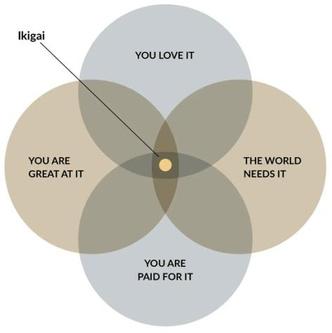
Figure 10 Adapted from PostivePsychology com Toolkit, 2020
After 2,500 years of evolution, TCM has become a very rich and sophisticated system of rational medicine with a great diversity of theories and applications. But, in its essence, it seeks to understand and facilitate harmony in human life.
It is based on a very simple principle: any system that is in harmony tends towards health, wellbeing, and sustainability. A system that is in disharmony tends towards illness, disease, suffering, and collapse. To learn more, click here
Additional resources:
• What is Chinese medicine
•
How Acupuncture Pierces Chronic Pain
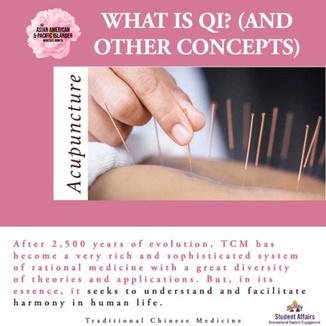
At the heart of the Korean spirit is a concept called “Han.” It is central to Korean-ness in the same way “aloha” is to Hawaiian-ness. Oddly, however, it is rarely mentioned in conversation or in the media. Its English translation is nonexistent. Han is a mixture of endurance, sorrow, and yearning for vengeance for the wrongs of colonial history. To learn more, click here.
Additional resources:
• The Korea Society: A brief history of Han with Professor Michael D. Shin
• Anthony Bourdain on Han: Parts Unknown (S. Korea) watch here.
• The problem with “han”
• A complex feeling tugs at Koreans
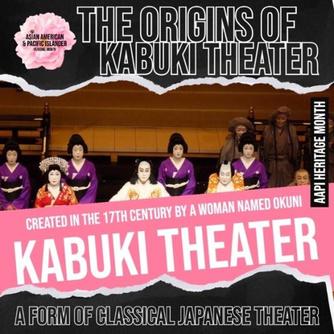

A common theme throughout the two thousand years of theatre’s history has been the exclusion of women’s presence on stage in most, if not all regions of the world, at some point in time.
Kabuki is a form of classical Japanese theater characterized by its extravagant costumes, make-up, performances, and a surprising lack of women’s bathrooms backstage That’s because kabuki actors today are almost exclusively male Kabuki was said to have been created in the 17th century by a woman named Okuni She was a shrine maiden from Izumo who started organizing small performances of songs and dances (the literal meaning of “Kabuki”) in the dry riverbed of the Kamo River in Kyoto.
To learn more about how: “Kabuki became a guy thing” and “how the absence of women in Kabuki helped create the modern day image of ninjas,” click here.
Additional resources:
• From Gay to Gei: The Onnagata and the Creation of Kabuki’s Female Characters
• Okuni Kabuki Dancer
• Kabuki theatre: a drag act with a difference
UC Irvine political science professor Claire Kim created the concept of racial triangulation, which argues that Asian Americans “have been racialized relative to and through interaction with Whites and Blacks,” and that Asian and Black Americans have been pitted against each other by systems of White supremacy that benefit from excluding others.
The concept such as model minority are the manifestation of racial triangulation today and maintain such structures of racialization and racially charged violence

Model Minority stereotype is the cultural expectation placed on Asian Americans as a group that everyone will be:

• Renders disabilities and other struggles “invisible” even as it forces AAPI to compete with classmates
•
smart (i.e., naturally good at math, science, and technology), wealthy, living American Dream
•
• Additional resources:
• hard-working, self- reliant docile and submissive spiritually enlightened and never in need of assistance
Conceals fact that income disparity is wider among AAPI than in any other racial group. This hides the fact that nearly 2 million AAPI live in poverty and tend to be underserved by U.S. social services. To learn more, click here. Internalization of such stereotypes has caused a mental health crisis among AAPI in recent years To learn more, click here Makes AAPI targets of violent crime
See above.
• Watch this 6 minute animated video: The Model Minority Stereotype and how it hurts
• Framing Asian Suffering in an Anti-Black World: A Conversation with Claire Jean Kim
• Asian Americans Are Still Caught in the Trap of the “Model Minority” Stereotype. And it Creates Inequality for All
• Opinion: Here’s how the model minority myth hurts Asians and other people of color

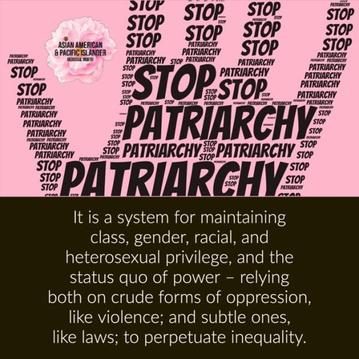
Patriarchy is about the social relations of power between men and women, women and women, and men and men. It is a system for maintaining class, gender, racial, and heterosexual privilege, and the status quo of power – relying both on crude forms of oppression, like violence; and subtle ones, like laws; to perpetuate inequality Patriarchal beliefs of male, heterosexual dominance and the devaluation of girls and women lie at the root of gender-based violence. Patriarchy is a structural force that influences power relations, whether they are abusive or not.

The historical nature of gender-based violence confirms that it is not an unfortunate aberration but systematically entrenched in culture and society, reinforced, and powered by patriarchy. ~ Asian Pacific Institute on Gender-Based Violence
To learn more, click here.
Additional resources:
• Patriarchal Violence
• Understanding Masculinities and Violence Against Women and Girls

AAPI women have been forced to live with stereotypes that take away our humanity and reduce us to sexual objects. We can trace these stereotypes as far back as 1875, when the Page Act, the U.S.’s first immigration law, banned Chinese women from entering the country on the grounds of sexual deviance. Decades later, wars in Japan, Korea and Vietnam reinforced this stereotype to the point where depictions of Asian women as temptresses or sexual servants took root in American popular culture. ~Sung Yeon Choimorrow
Additional resources:
• The Links Between Racialized and Gender-Based Violence
•
How Violence against Asian Americans has grown and how to stop it, according to activists
• • Stop Treating Violence Against Asian American Women as Just a Racism Problem
Violence Against Asian American Women Is Rooted in More Than Just Hate
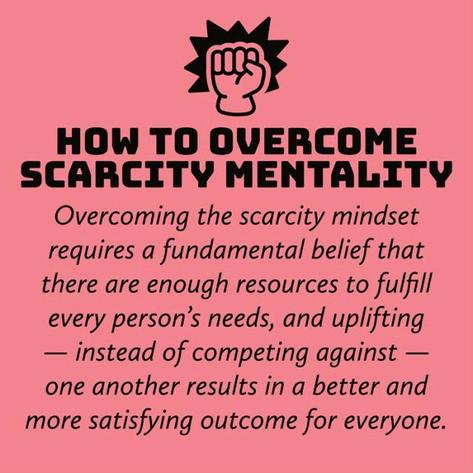
Scarcitymentalityistheideathat everyoneexistswithinaspectrumof competition.Thismentalityassumes therearefiniteresources(tangible and intangible),andthateveryresource obtainedbyonepersonorgroupcomes at the expense ofanother.Therefore,we needtokeepresourcesforourselvesor reservethemforpeopleinourclosest circle(s).
Theideaofscarcitywasintentionally weaponizedbydominantgroupsin powertojustifytheunequal distributionofresources.Mostnotably, thiswasdonethroughtheconstruction ofrace(underthefalsepretenseofbiology)tosystematicallyexploitgroupsseenas "others."
VisitoursharedresourcefoldertodownloadtheToolkitforUnlearningScarcity, CultivatingSolidarityintheAsianAmericanCommunity—PartOneusestheAsian Americanexperiencetocontextualizeandunderstandhowscarcitymentalitymanifests differentlyformarginalizedidentities. F

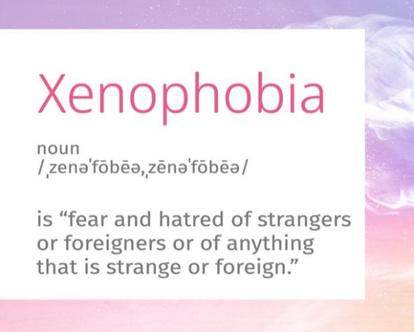
The murder of Vincent Chin, a Chinese autoworker, by two white men was a seminal moment in Asian American civil rights activism. In 1982, a Chinese American man named Vincent Chin was murdered in a racially motivated hate crime by two white autoworkers. To learn more, click here.
Additional resources:
• PBS Documentary: Who Killed Vincent Chin
• Vincent Chin Memorial Scholarship
Xenophobia has caused intense discrimination against the AAPI community because of blame and scare tactics As a result, violence and fear targets the APPI community To learn the difference between the terms, click here Considering reading Racism & Xenophobia in our shared resource folder.
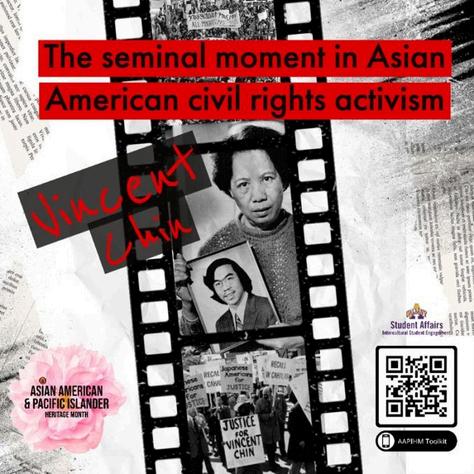
• 40 years after Vincent Chin’s death, activists work to keep legacy from fading
• Remembering Vincent Chin – and the deep roots of anti-Asian violence
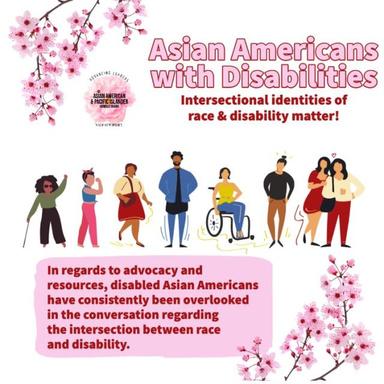
Additional resources:
The Asian Americans with Disabilities Initiative (AADI) is a youth-led nonprofit movement centered around intersectionality, aiming to amplify the voices of disabled Asian Americans. Their mission is simple: AADI empowers the next generation of disabled Asian American leaders with accessible resources so that they can combat anti-Asian racism and ableism in their own communities.

To learn more, click here.
• The Asian Americans with Disabilities Resource Guide, click here
• Alice Wong: Making Space for More Disabled Asians
• ‘Worthy of taking up space’: Jennifer Lee ’23 founds nonprofit to support Asian Americans with disabilities
• AAPI Mental Health: Understanding Ableism and Disability
In response to the alarming escalation in xenophobia and bigotry resulting from the COVID-19 pandemic, AAPI Equity Alliance (AAPI Equity), Chinese for Affirmative Action (CAA), and the Asian American Studies Department of San Francisco State University launched the Stop AAPI Hate coalition on March 19, 2020. The coalition tracks and responds to incidents of hate, violence, harassment, discrimination, shunning, and child bullying against Asian Americans and Pacific Islanders in the United States.
To learn more, click here.
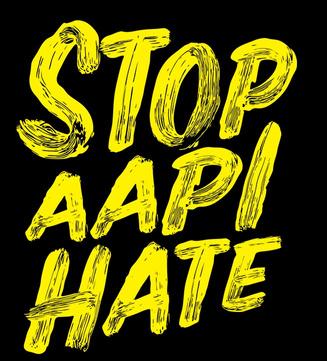

Click here to download the Asian American Racial Justice Toolkit which is a collection of resources from grassroots organizations hosted by Asian American Pacific Islanders for Civic Empowerment.


Special thank you goes to our editors: Jaci Yong & Professor Ineke Murakami and to Arleny Alvarez-Peña for the creation of the original logo and toolkit.
For more information about the Office of Intercultural Student Engagement, the Multicultural Resource Center or the Asian American Alliance contact the ISE office at ise@albany.edu